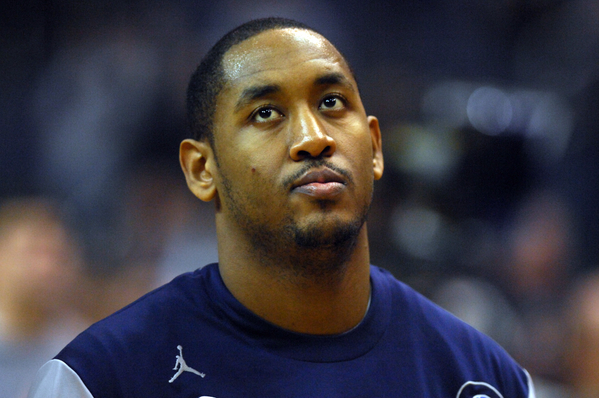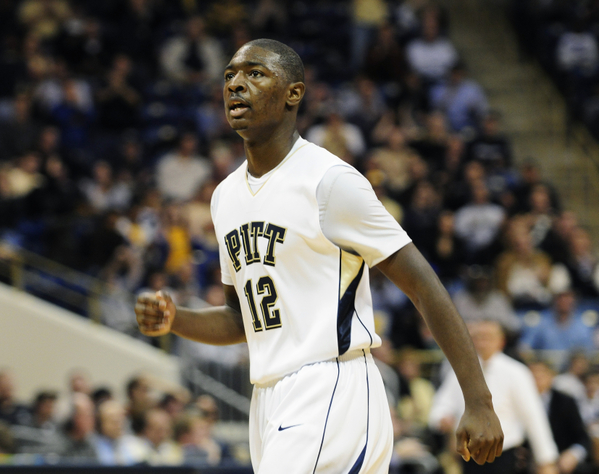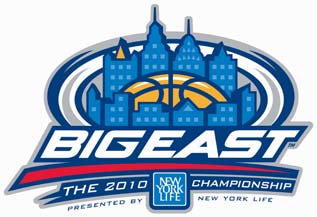
Rob Dauster of Ballin’ is a Habit is the RTC correspondent for the Big East Conference.
Pitt started the Big East season on fire. They won five straight out of the gates, including a three game road trip in which they took down Syracuse, UConn and Cincinnati. But after a loss to West Virginia in the Backyard Brawl, the Panthers have dropped four of their last five games to fall to 6-4 in league play, just a half-game in front of Louisville and a game in front of South Florida, Marquette, Cincinnati, and Notre Dame.
So what happened? How did Pitt go from the darling of the national media to a team in free fall?
Its simple. They can’t score. Through five Big East games, the Panthers were averaging 74.0 ppg. In their last five, that number has dropped to 60.3 ppg. When the Panthers were 5-0, Ashton Gibbs was averaging 20.0 ppg, shooting 52.0% from the field, and hit 16-22 threes. In his last five games, he’s averaging just 13.4 ppg while shooting 26.4% from the field and 6-29 from deep.
Don’t put it all on Gibbs, however. He isn’t the only one struggling. Brad Wanamaker is averaging just 9.6 ppg over the last five games, including being shut out against the Mountaineers. Jermaine Dixon sprained his ankle in the St. John’s game and missed the Panther’s loss to South Florida. Dante Taylor hasn’t scored in four games, and Travon Woodall has just eight points in that span. Gary McGhee, Pitt’s 6’10, 260-lb center, couldn’t hit a layup if his life depended on it. There is no reason someone should go 3-11 from the field when they don’t take a shot outside of two feet from the rim. Nasir Robinson has scored 23 points in five games in his 26 point outburst against Louisville. Gilbert Brown is really the only guy playing well offensively right now, and even he has been painfully in consistent. He scored 20 and was 8-9 from the floor in the loss to Georgetown, but scored just 16 points on 3-13 shooting over his next two games. After dropping 25 in the loss to South Florida, Brown was shut out against West Virginia.
Its really that simple. The biggest reason that Pitt was thought to be down this season was their lack of firepower offensively. There isn’t anyone on this roster that is considered a go-to scorer. Even Ashton Gibbs, who has been one of the most improved players this season in the Big East, is more of a secondary scoring option. He’s not great at creating his own shot, especially against a set defense, and it is starting to be exposed. But Pitt has never exactly been known as a team with tremendous offensive prowess. They aren’t going to be scoring 85 points a game and beating teams in a shootout. Pitt’s success hinges on their ability to defend, which is something they haven’t exactly been doing great of late either. Their four losses have been some of their worst defensive performances of the season. What is a good way to go on a losing streak? Struggle to score the ball while playing shoddy defense.
Other News and Notes
- I told you South Florida was going to be good, didn’t I? Believe it or not, USF is now on the bubble. They are 15-7 and 5-5 in the Big East. Their RPI is in the mid-40s. They have wins over Pitt and at Georgetown (not that it makes a difference, but that win came just three days after the Hoyas smacked Duke). While the Bulls are just 2-4 against the RPI top 50, they are 6-6 against the top 100. They have one ugly loss against Central Michigan, but that can be somewhat excused as it was their first game playing without Gus Gilchrist. Speaking of Gilchrist, the 6’10 center who was averaging 18.8 ppg and 7.4 rpg before suffering a severe high-ankle sprain is scheduled to return against either Notre Dame or Marquette. With their schedule down the stretch (they only play one game at Villanova against a team with an RPI higher than 48 and a winning record in the Big East) and Gilchrist’s pending return, if USF could get to ten Big East wins and 20 wins on the season, which may actually be shooting low, they have a very good chance at getting a bid.
- Jeremy Hazell was pulled late in Seton Hall’s loss to Villanova on Tuesday. Hazell had scored 32 points, but also had thrown up three terrible shots in a row. Bobby Gonzalez benched him with 4:06 left and the lead only at 11. Many speculated that it was the result of poor shot selection by Hazell, but Gonzo cleared it up during the Big East conference call by saying that Hazell “didn’t run back on defense” and that he did “not join his teammates in the huddle.”
- Did any team in the league have a stranger week than Georgetown? On Saturday, the Hoyas beat the snot out of Duke in a game that was nowhere near as close as the final score indicated. Four days later, the Hoyas became the fourth victim in South Florida’s run. And, as you should be accustomed to by now, Chris Wright struggled in the loss and flourished in the win. He has yet to score double-digits and lose this season.
- Want another crazy prediction? Marquette is going to make the tournament. The hardest of the hard-luck losers this season (their five Big East losses have come by a total of eight points, and their three non-conference losses were by one, four, and nine points), Marquette has won three straight Big East games to get to 5-5 in the league. They have a pretty easy schedule the rest of the way, as they don’t play any of the Big East’s big four, they get Pitt at home, and play just one of their four road games against a team in the RPI top 50 (Cincy).
- Cincinnati, on the other hand, won’t make the tournament. And it isn’t due to a lack of talent as much as it is a lack of coaching. Or effort. Or something. Because in a game they needed Thursday night against Notre Dame, the Bearcats were embarrassed. Luke Harangody had 37 points and 14 boards as Cincy was outrebounded and out-toughed. By Notre Dame. Cincinnati is a team that is supposed to pride themselves on their toughness, their defense, and their board work. Notre Dame is a finesse team. It looks like the Bearcats may have given up on the season.
- Villanova’s schedule gets a whole lot tougher over the next month, starting this week. On Saturday, they head to Georgetown before going to West Virginia on Monday. Don’t be surprised if the Wildcats are in third place in the conference come Tuesday. That said, going 2-0 over that stretch could all but seal a #1 seed come Selection Sunday.
PLAYER OF THE WEEK: Dominique Jones, South Florida
Jones went for 37 points on Sunday against Pitt and 29 points Wednesday against Georgetown. He’s averaging 35.0 ppg in the Bulls’ four-game winning streak. In those four games, he is shooting 61% from the floor and has gotten to the free throw line (…wait for it) 63 times! I think the best way to describe Jones’ game is that he attacks the rim with ruthless efficiency. He’s too strong to be defended by smaller guards, and too quick to be guarded by small forwards. He goes right almost every time he puts the ball on the floor, and yet teams are still struggling to slow him down. Up next for Jones is Notre Dame, a team that ranks 255th in defensive efficiency, far and away the worst in the Big East. Could Jones go for 50?
TEAM OF THE WEEK: West Virginia
Its really South Florida, but I’m sick of writing about the Bulls, so I’m giving West Virginia the team of the week award. The Mountaineers have gone 2-0 since you last checked in with us, beating Louisville on Saturday and knocking off Pitt in the Backyard Brawl on Wednesday. WVU has now won five straight games since they lost three of five. The biggest reason for their resurgence has been the play of Truck Bryant. Bryant was banged up earlier in the season, but has started coming on of late, playing really solid basketball. He knocks down open jumpers, he can get in the lane and draw a foul, he can create shots for his teammates, and he does so without turning the ball over. Over his last five games, Bryant is averaging 11.8 ppg, 4.8 apg, and has turned the ball over just eight times.
POWER RANKINGS
1. Villanova: 20-1, 9-0
Last Week: 2/2 vs. Seton Hall 81-71
This Week: 2/6 @ Georgetown, 2/8 @ West Virginia
2. Syracuse: 22-1, 9-1
Last Week: 1/30 @ DePaul, 2/2 vs. Providence
This Week: 2/7 @ Cincinnati, 2/10 vs. UConn
3. West Virginia: 18-3, 7-2
Last Week: 1/30 vs. Louisville 77-74, 2/3 vs. Pitt 70-51
This Week: 2/6 @ St. John’s, 2/8 vs. Villanova
4. Georgetown: 16-5, 6-4
Last Week: 1/30 vs. Duke 89-77, 2/3 vs. South Florida 64-72
This Week: 2/6 vs. Villanova, 2/9 @ Providence
5. Pitt: 16-6, 6-4
Last Week: 1/31 @ South Florida 61-70, 2/3 @ West Virginia 51-70
This Week: 2/6 vs. Seton Hall, 2/8 vs. Robert Morris
6. Louisville: 14-8, 5-4
Last Week: 1/30 vs. West Virginia 74-77, 2/1 vs. UConn 82-69
This Week: 2/6 vs. Rutgers, 2/11 @ St. John’s
7. Marquette: 14-8, 5-5
Last Week: 1/30 @ UConn 70-68, 2/3 vs. DePaul 80-69
This Week: 2/6 @ Providence
8. South Florida: 15-7, 5-5
Last Week: 1/31 vs. 61-70, 2/3 @ Georgetown 72-64
This Week: 2/7 @ Notre Dame
9. Notre Dame: 16-7, 5-5
Last Week: 1/30 @ Rutgers 73-74, 2/4 vs. Cincinnati 83-65
This Week: 2/7 vs. South Florida, 2/11 @ Seton Hall
10. Cincinnati: 14-8, 5-5
Last Week: 1/30 vs. Providence 92-88, 2/4 @ Notre Dame 65-83
This Week: 2/7 vs. Syracuse
11. Providence:12-10, 4-6
Last Week: 1/30 @ Cincinnati 88-92, 2/2 @ Syracuse 68-85
This Week: 2/6 vs. Marquette, 2/9 vs. Georgetown
12. UConn: 13-9, 3-6
Last Week: 1/30 vs. Marquette 68-70, 2/1 @ Louisville 69-82
This Week: 2/6 vs. DePaul, 2/10 @ Syracuse
13. Seton Hall: 12-8, 3-6
Last Week: 2/2 @ Villanova 71-81
This Week: 2/6 @ Pitt, 2/11 vs. Notre Dame
14. Rutgers: 11-11, 2-8
Last Week: 1/30 vs. Notre Dame 74-73, 2/3 vs. St. John’s 84-72
This Week: 2/6 @ Louisville, 2/9 vs. Caldwell College
15. St. John’s: 12-9, 2-7
Last Week: 2/2 @ Rutgers 72-84
This Week: 2/6 vs. West Virginia, 2/11 vs. Louisville
16. DePaul: 8-14, 1-9
Last Week: 1/30 vs. Syracuse 57-59, 2/3 @ Marquette 69-80
This Week: 2/6 @ UConn



































![438012310054_Kentucky_v_Arkansas[1]](http://rushthecourt.net/wp-content/uploads/2010/04/438012310054_Kentucky_v_Arkansas1.jpg)















